Host Empress Wu is a stunning giant, which is allocated among other hosts. How this hybrid turned out to be unknown. Some breeders are inclined to the opinion that Empress Wu is the result of self-polling the host Big John, but it has not turned out to confirm it. The magnificent empress grows up to 1.5 m in height, and the diameter of her bush is twice as much more than this magnitude. The host is capable of changing the color of foliage throughout the season, it is very cold-resistant, it is easy to care for it. In your garden, it will become a real sensation, and if you want to grow something unusual, fabulous and impressive - Host Empress Wu will fulfill your desires.
Hosta Empress Wu, a description of
- Hosta Empress Wu - herbaceous perennial family Asparagus.
- Natural growing area - Japan, Far East, Asia, the Kuril Islands, Sakhalin. Colonizes the shores of the rivers, forest edges, at the foot of the mountains.
- Bush varieties hosts Empress Wu the highest - up to 1.5 m in height. Leafy rosette, though composed of almost erect leaf, rather wide - about 2.5 meters in diameter.
- leaf structure from hosts wafer shape - broadly. Color - dark green with a glossy surface. In spring the leaves are covered with a waxy bloom, so acquiring a blue-gray tint.
- Flowering from hosts unremarkable, but at the same time refined. Over hardwood rosette rise slightly oblistvlennye flower arrows. Inflorescence racemose, the flowers are funnel-shaped, neat, often one-sided, pale lavender color.
- Blooms profusely in July. The most fantastic spectacle - the hosts in the third year of life, when leafy rosette grows and finally the flowering period is crowned with multiple stems.
- The fruit hosts Empress Wu - triangular boxes with black seeds.
Interesting! Host giant bears the name of the first and only female Emperor of China - Empress Wu.
Planting Tips hosts Empress Wu
For host Empress Wu easy to care for, because it does not require much attention. But we need to take responsibility for site selection for planting this beauty and, of course, to put it correctly.
Important! Buy host Empress as a whole can be a bush, and only the rhizome. So that the plant is well stuck, be sure to check before boarding root: if you notice signs of rot, cut off the damaged roots and treat the cut coal.
Requirements to soil and environmental conditions for the hosts Empress
- Hosta Empress undemanding to the composition of the soil, but from the experience of gardeners, it prefer humus loam.
- Choosing a site for the hosts, you need to eliminate stagnant water, because it can not stand too wet soil.
- Sandy soil slowly slows down the height of the host, which negatively affects its development and the appearance of the bush. If there is no other choice, and the host has to be planted into the sandy soil, it is necessarily equipped with a complex of minerals and humus.
- A place for the host Empress Wu choose spacious, with scattered light. In the cramping of the host will not be able to grow, and if you put it under the outdoor sun, her greens will lose its color and decorativeness.
On a note! Host Empress Wu, like all kinds of kind, grows slowly, so you can admire the magnificence of its leaves, you can only for the third year after landing.
Rules landing hosts Empress Wu
- Put the landing, transplant or division of the corps of the host of the Empress can either early in spring or at the end of autumn.
- Before planting the land on the site, pumped one depth of the bayonet of the blade. A mixture of "Kemira Universal" is introduced into the landing point in the amount of 60 g.
- The pit is digging big and spacious. Drainage is laid on the bottom, and if necessary - ensure the flow of water.
- Rhizome hosts lay out on the land of the Earth, distributing the roots in a circle. The root is tightly pressed to the soil, the ground is sprinkled, the top layer is torn.
- Then they carry out abundant irrigation.
Secrets of the care of the host Empress Wu
The care for the host of the Empress Wu is simple: the bush is watered, fertilizer makes, loosen and flow the soil in the rich circle. As you bite, the flowerca is cut to the bush look neatly and not falling apart.
Watering, feeding and fertilizer of soil Hosts Empress
- Huge leaves of the host Empress Wu in hot weather will actively evaporate moisture in large quantities, which creates certain difficulties in care. Often in the conditions of moisture deficit, the tips of the leaves dry, the blooms are faded. To preserve the decorativeness of the bush, it is poured daily. At the same time, you need to remember that overflow is no less dangerous for the host, rather than drought. Therefore, it is better to water often, but gradually.
- The soil in the attractive circle is desirable to loosen more often so that the earthen crust is not formed.
- Do not forget about feeding. Mineral fertilizers, and organic agents are suitable for the host. Most of the nutrients of the host receives from organic fertilizers by making a mulch.
- A host of a host in combination with sulfur catalysis, saltier and superphosphate (10:20:20).
- At the beginning of the formation of buds and immediately after flowering, potassium-phosphoric mixtures with nitrogen content are introduced.
- Host Empress Wu needs annual mulching. First, it ensures the receipt of nutrients, and, secondly, the mulch slows moisture evaporation.
Important! In compliance with all rules of care, the host of the Empress retains decorativeness for 15 years in one place.
Preparing the host of the Empress for Winter
- Host Empress Wu is a frost-resistant plant and no shelter does not need. But in the regions with harsh climatic conditions from the bush, they do not remove the fallen foliage, and in the winter they monitor that there is enough snow. But it is rather reinsurance than a prerequisite.
- A controversial question - trimming the above-ground part of the host. Part of the gardeners prefers not to crop the leaves, as they serve natural protection against frosts, others - insist on trimming fading foliage with its further burning for preventing pest development.
- If you decide to keep the leaves of hosts for the winter, they will need to be removed in early spring at the time of the appearance of the first shoots. If you plan to cut a deciduous outlet, do it before the onset of frosts, but at the same time the leaves must be completely yellowed, otherwise the bush can dry.
Did you know? In Japan, the hosti cuttings are a real delicacy, and the plant itself crashes into the rank of the Holy Plant Object.
Methods of breeding hosts Empress
You can propagate the host in different ways, so you can choose the one that will have to the soul of the gardener.
Decision Buste Hosts Empress
Split the host by dividing the bush under the power even a novice gardener. It is almost impossible to make a mistake in this matter.
- It is better to multiply the plant in spring or on the eve of the autumn, but when complying with all the rules, the host will carry the division of the bush yearly.
- For reproduction, only adult bushes at the age of 3-4 years and older are suitable. If you divide young bushes, they can dwell and die.
- When young shoots appear, the bush dig out.
- With the help of a knife or shovel, the rhizome is divided into parts.
- If inexperienced you have separated part of the rhizoma without pressing roots, do not throw away the plant, put in the guy - over time it will let the new roots and root.
- Then new bushes put in advance prepared pits, observing the standard landing rules.
Rules for dividing the bush host Empress Wu in the photo:
Hospitating Hosts Empress Wu
For reproduction of the plant also use shilling. It is difficult to get a good cutter, as shoots grow tightly, there are no roots on them, but there is a part of the root - "heel".
- Check in summer.
- The cuttings are immersed in nutritious and light soil.
- You can do it directly on the garden or in a pot.
- The sheet from the cutter is cut off, so that it is faster roots.
- Then the cuttings are covered with a glass cap.
- A few days later, the cuttings are rooted and the shelter is removed.
- Then the plant provides familiar care.
Growing the host Empress from seeds
Empress can grow from seeds. But the cycle of seeds before purchasing a decorative species will take five years. It is also necessary to consider that the seeds of the hosts have an element at 70%.
- Sowing starts at the end of winter.
- Initially, the seed stratification, withstanding them in the cold (in the refrigerator) 30 days.
- Then they are pre-wrapped in the juice of the meal, rhus or zircon for half an hour.
- In March-April, seeds are sown in sterile soil. Also treated by a manganese pot.
- The seeds are sown along the surface of the soil, then cultivate them to a depth of 6-7 mm.
- Capacity with seeds is closed with film shelter, put in half at temperatures + 18 ... + 25 ° C., regularly watered.
- Shoots germinate in 17-21 days.
- The field of the appearance of two full-fledged leaves, the seedlings of the host Empress Wu dive into separate pots with nutrient soil, filled with ¼ sand.
- Capacities with seedlings are watered only through the pallet.
- From this point on, the plant begin to temper, shooting for 2-3 hours a day, film shelter.
- After 7-10 days, the seedlings are taken out to the street if the air temperature is not lower than + 18 ° C.
Enpeller host seeds in the photo:
The stability of the host of the Empress to diseases and pests
Host Empress Wu according to gardener reviews is rather resistant to diseases. But there is always a risk of infection during landing work.
Possible host diseases include:
- fillostikosis - fungus, causing yellow-brown specks on foliage and inflorescences. The affected instances need to burn, and the soil is disinfected;
- gray rot - striking a deciduous outlet. When a gray sticky laid, the bush is immediately treated with a foil-based means.
Often the host is damaged by pests:
- slug - eat foliage, leaving holes on it. To catch them around the host lay a beer with a beer;
- Stroke nematodes - leave behind yellow spots on the leaves. Since nematodes cannot destroy eggs, the affected plant is processed every season. Or you can completely burn a sick bush and with it to destroy all the flowers within a radius of 2 m.
Landscape design and host Empress, photos with description
- The host of the Empress will be a marvel in your garden. It will attract views if it is planted sololy, supplementing the landscaped design by the soil ribs - a semi-shaped phlox, Iberis, stamps.
- Taking into account that the host of the Empress Wu is blossoming late in the spring, it is better to plant the nearby onion of the Rannets-listening plants nearby. It will revive the garden landscape until the host will acquire a beautiful greens.
- Beautifully combines host with plants with openwork greens - ferns, geranium, buznotilic.
Although hosts are often used as borders or for carpet landings, the Empress Wu is not suitable for these purposes, since it is not different compactness. But thanks to its size, it makes a variety and greatness in your garden.

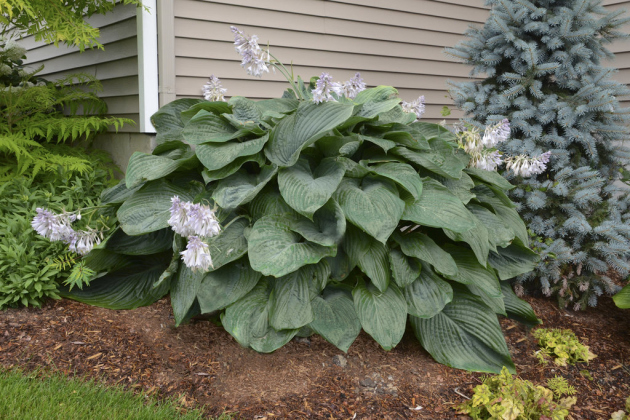
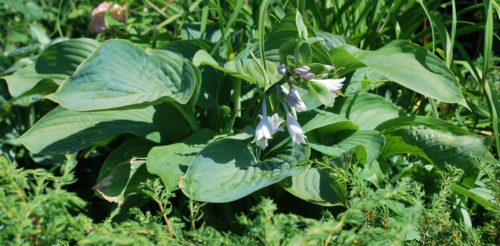
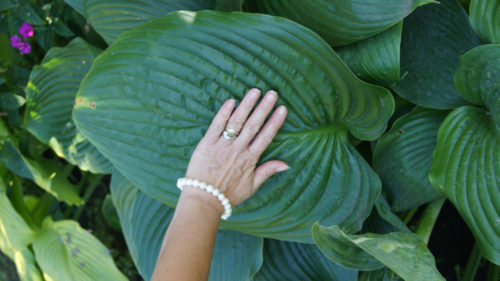
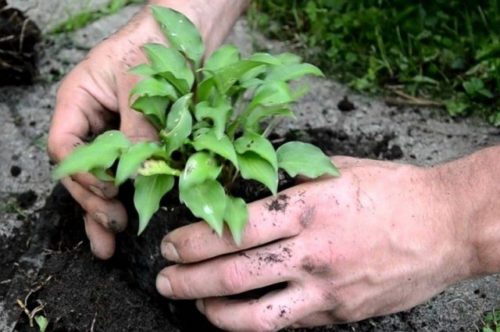
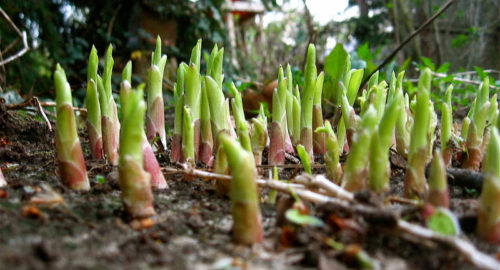

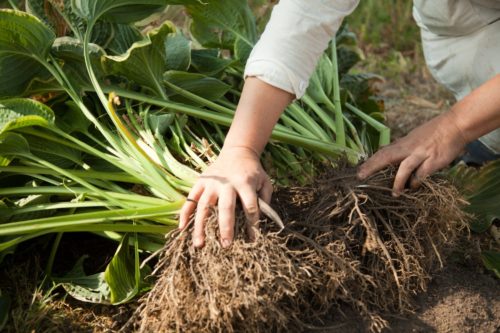
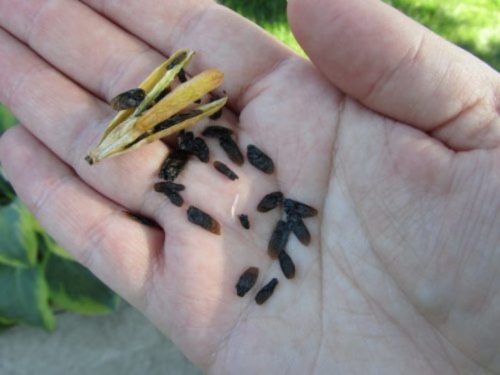
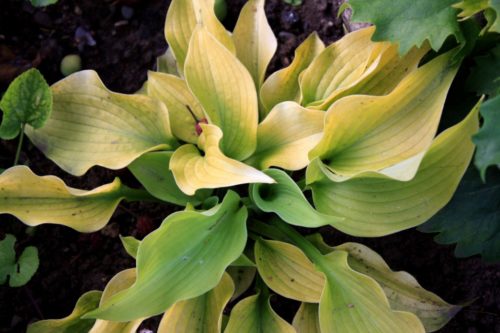
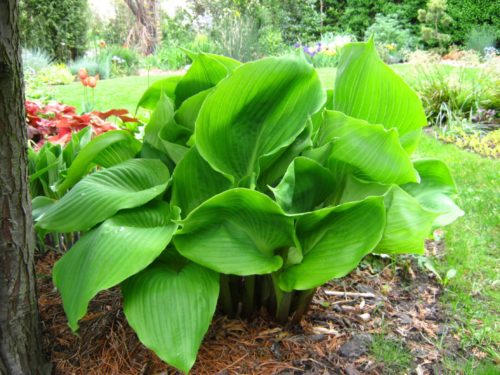
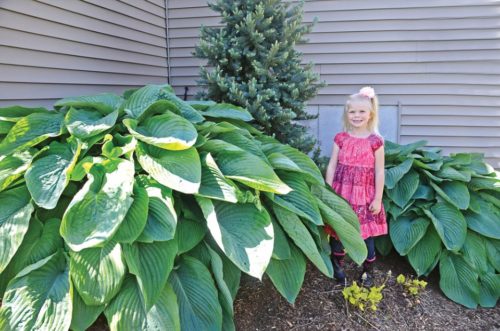
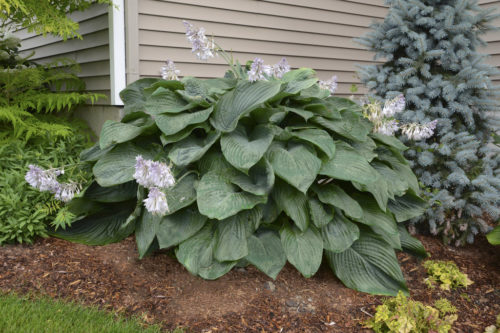












 Start a discussion ...
Start a discussion ...